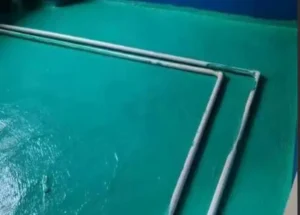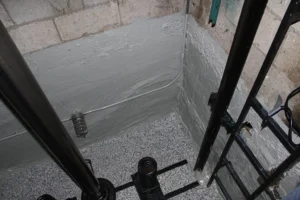Once you spot trouble on your roof-water stains creeping across the ceiling, rusty screws, puddles pooling on a flat section, or frayed shingles on a sloped plane-it’s normal for repair costs to flash through your mind. Sun exposure, storms, and plain old time eat away at shingles, metal, and seals alike. You may already be bracing yourself for a full tear-off and replacement, a project that drains both money and energy. But do you really need that level of work every time?
What Are Roof Coatings?
On-site teams spray, roll, or brush a liquid formula-silicone, acrylic, polyurethane, or another elastomer-mixed product-straight onto the tired deck in one or more passes. After curing, the film locks into a stretchy, seamless skin that blocks rain and shrugs off UV rays. Because the fresh layer rides above the old one, ripping out the existing membrane becomes unnecessary, saving a big chunk of dirt, time, and labor. Reflective formulas also toss sunlight away, trimming air-conditioning bills inside. Thickness is key: warranties tie to it, with 20 mils about 0.5 mm giving a ten-year promise and 30 mils roughly 0.75 mm stretching that to twenty years.
Roof coatings perform beautifully, yet only on decks that are still sound. If the structural board is spongy or the underlying felts are badly thinned, a coating merely caps problems it cannot mend. In those cases, experienced roofers must step past the easy fix and swap out rotted or worn components first.
Roof coatings really shine only when the roof itself is solid. If the deck has begun to rot or if hidden layers are badly compromised, a coating will simply sit over damage it cant repair. Because of that, a good contractor will first strengthen those problems with serious patching-or even a complete tear-off-and only then put down the protective layer.
How Are Roof Coating Systems Applied?
Proper surface preparation is critical for long-lasting performance:
-
Remove Wet Insulation: Any moldy or soggy insulation must be replaced to avoid future blistering or coating failure. Tools like moisture meters can help detect wet spots.
-
Remove Damaged Membranes: Existing waterproof layers with cracks or delamination must be removed; simply patching won’t ensure adhesion or durability.
-
Perform Adhesion Testing: Test a small coating patch to confirm compatibility and adhesion strength.
-
Clean and Prime: Thoroughly clean the roof to remove dirt, grease, and loose materials. Use power washing and cleaners like PolyClean™ for best results. Then apply the appropriate primer based on roof material (e.g., rust-inhibiting primers for metal, penetrating primers for concrete).
-
Seal Seams and Fasteners: Reinforce vulnerable joints with sealants or fabric-reinforced membranes before topcoating to prevent leaks and damage.
Can All Roofs Be Coated?
Most built-up, single-ply, modified bitumen, and metal roofs can be coated effectively. However, gravel built-up roofs and asphalt shingle roofs generally are not suitable for coatings due to material and performance limitations.
Other important criteria include:
-
At least 75%-85% dry insulation and prior repair of damaged areas.
-
Regular roof inspections and maintenance to maintain warranty compliance.
-
Proper drainage to prevent ponding water, which can damage coatings.
When Should You Choose Roof Replacement Instead?
If you notice any of these signs, it’s time to consider a full replacement rather than coating:
-
Persistent large water stains inside.
-
Multiple recurring leaks.
-
Soft or spongy roof deck areas.
-
Deteriorated underlayment.
-
Moldy or compressed insulation.
-
Warped or damaged roof joists.
-
Significant granule loss from shingles.
-
Severe ponding or pooling water.
-
Extensive moss or algae growth.
-
Visible sagging or brittle roofing materials.
-
Broken flashing or large membrane tears.
-
Roof unable to support its original load.
Why Choose Roof Coatings?
Why Choose Roof Coatings? Roof coatings give you a budget-friendly plan compared to tearing off the whole roof-roughly half the price. The new layer carries a warranty that runs from 5 to 25 years, covering both materials and labor.
About every 20 years you can slide on another thin coat, adding back thickness and restarting the guarantee. Application moves fast, creates little noise, and hugs vents, curbs, and HVAC units much more easily.

Request a Quote from Huafeng Waterproof Materials Co., Ltd.
Before making your decision, have a professional inspection to determine the best approach for your roof’s condition and your budget.
Huafeng Waterproof Materials Co., Ltd. offers a wide range of high-quality roof coatings, including acrylic, silicone, and asphalt-based products suitable for flat, low-slope, metal, concrete, and other roof systems. Contact us to learn more, request product data sheets, or get expert advice on the best roofing solution for your needs.
For more information or to inquire about our roof waterproofing solutions and waterproof floor paint products, feel free to get in touch with us. We’re here to help!
- Phone: +86 138 6365 6701
- Email: Huafengwaterproof@gmail.com
- WhatsApp: +86 138 6365 6701
We look forward to assisting you with all your waterproofing needs!






